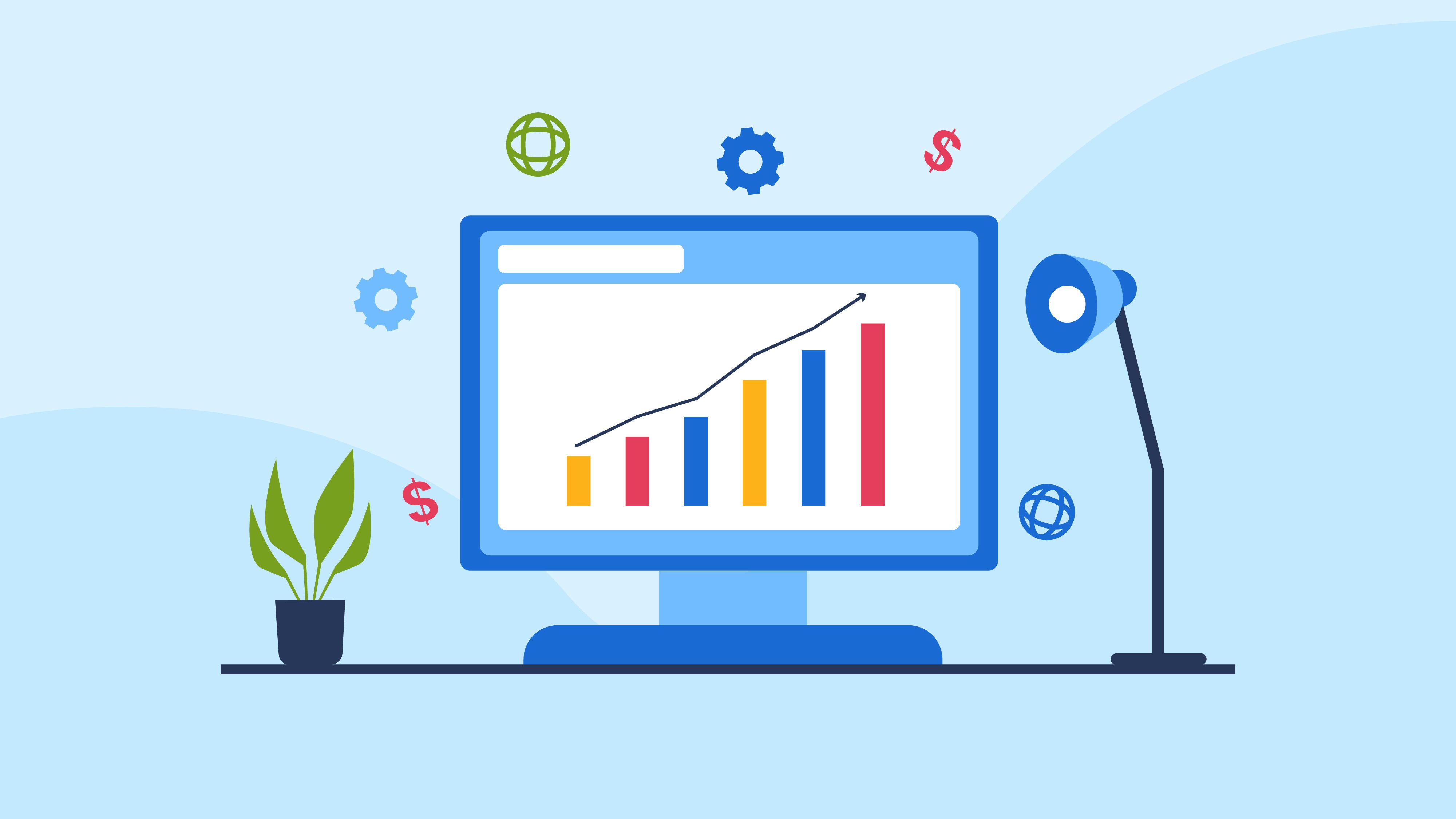Important Online Radio Streaming Reports & How to Improve
Today, we’re taking a closer look at the most important radio reports and what they reveal about your performance.

If you host your radio station with a decent host providing Icecast or ShoutCast —or their own proprietary streaming system —chances are, you’ll have access to audience measurement reports.
Today, we’re taking a closer look at the most important radio reports and what they reveal about your performance.
Plus, we’re examining ways to improve with practical strategies.
We’ll even answer some frequently asked questions —including, “How do online stations determine the number of listeners?”
What is audience measurement?
In regards to online radio, audience measurement is all about determining how many people have tuned in to the live stream.
You measure the audience to gauge how popular your radio station is with your target audience.
The metrics can shed light on areas of improvement, and taking corrective action can potentially increase the station’s reach.
Why is audience measurement important for radio stations?
You should pay greater attention to your radio listenership reports because they reveal:
● Whether the radio station is growing;
● The best content that resonates with your audience and how to capitalize on it;
● Your best performing geographic segments, where most of your listeners come from;
● The most optimum broadcast times;
● The monetization potential, such as how many listeners you draw and a little about their interests or demographics, which are excellent discussion points when approaching potential advertisers.
How online radio stations collect listener reports
Audio streaming server programs such as Shoutcast and Icecast collect reports on active connections and use cumulative counters that aggregate metrics over time, such as how long people have been listening. A number of third-party programs can fetch server reports from streaming servers.
Some of the information that the streaming modules may collect include:
● IP addresses - Used to identify listeners and determine their location
● Media player - Radio streams may be played on various media players or browser-based online players such as our free proprietary web player.
● Listening duration - The system can determine when the client started streaming and when it stopped.
● Device - Whether they accessed the stream using a computer, mobile, or tablet. For computers, it’s easy to know the OS used.
Which data is not available?
It may be possible to know the listener’s location, but it can take extra digging to find out their demographic data or psychological characteristics and traits.
Because interactions occur online or through the station’s apps, it is possible to bridge the gap in data using surveys or feedback forms.
How do FM stations determine the number of listeners?
Technically, it’s impossible to accurately determine how many FM receivers (such as car radios) that are currently receiving the FM wave and converting it to audio.
Broadcast radio is a “One Way Medium” with no substantial audience measurement data.
Listenership is tracked by third-party firms, who come up with radio ratings and other metrics.
The main metric is the Average Quarter Hour figure, which generally describes the number of listeners tuned in for more than 5 minutes during a 15-minute cycle.
Popular sources for radio listenership reports include:
● Arbitron - Acquired by Nielsen and provides radio audience reports in the US.
● Nielsen - Measures all things audio, including streaming, podcasting, and broadcast radio.
● RAJAR - Conducts radio listenership surveys every week for the UK broadcasting industry.
The radio measurement organizations utilize various tools in their toolkit, including:
● Portable People Meter - PPMs listen for hidden tones to recognize stations listeners are currently tuned into. Nielsen is taking advantage of wearable technology to introduce smart wearable PPMs available as wristbands, clips, and pendants.
● Radio Listening Diary -Availed as pamphlets, listeners manually log in the number of times they have listened to particular stations during the day.
Ratings vs. Share
Ratings indicate the portion of the overall target market that tuned in for a particular show. For instance, if a station has a rating of 1.0, 1% of the total estimated households with FM receivers tuned in. Ratings are tailored for specific demographic groups, such as 18-24-year-olds.
Share represents the portion of listeners the station has attracted from the total live audience at a particular time. If the station commanded a share of 100 listeners based on a total live audience of 500, it had a 20% share. Now, if the total possible audience was 1000, the show would have a rating of 1.0.
5 Key Online Radio Reports & How to Improve them
Reports can paint a realistic picture of how the station is performing across important areas. So, let’s examine some of the most important reports to watch out for and how to improve on them:
1) Listener maps
The listener map is a global map showcasing all the continents and major geographic locations. It leverages the streaming client’s IP address to show live locations with pinups on the map. The IP-to-location may achieve 50 to 75% accuracy in determining the user’s city.
How to get more listeners from different geographic locations
The streaming map can help determine if you’re attracting listeners from your target location. To improve on targeting:
● Localize your website;
● Use geographic filters when promoting your radio station with Ads;
● Create content that you’re target listeners may like;
● Cover local events in their area, news reports, news, etc.
2) Current listeners
The current listeners number shows how many people are currently streaming the audio. It’s mostly a live counter of connected streaming clients but not how many people are listening because several people may listen on one stream.
How to draw more listeners
The goal of any station is to get more listeners. Here are some ways to improve
● Create the best content you can—the best playlists, live shows, documentaries, etc.
● Get listed on internet radio directories;
● Distribute your content in multiple ways, for instance, podcasting or with video;
● Use social media to attract listeners;
● Join Facebook promotional groups to share updates.
3) Total Listening Hours
The TLH is the total time people spend listening to your stream. It’s a function of the individual time per listener and the number of listeners.
How to keep people listening for longer
● Provide exciting content each hour, for instance, interesting radio hosts or music variety;
● Test different formats, and check what keeps fans listening for longer;
● Promote upcoming shows to encourage more tune-ins;
● Let listeners know what’s coming up in the show;
● Take song requests, as requesters will keep listening to hear their favorite songs;
● Interact with listeners by taking questions and reading out their commentaries;
● Shoutout to your listeners and acknowledge where they are listening from.
4) Listeners for the time duration (Hour, 24 hours, week, month)
Listeners for the time duration show how many people tuned in for a specific period, for instance, in the last 24 hours.
The reports track your overall performance and indicate if there is any growth or downturn.
How to improve overall listener numbers and grow your station
● Focus on long-term growth by making long-term strategic moves;
● Periodically review performance every hour or day and plot strategies for short-term improvement;
● Constantly grow your content by adding new segments and hosts.
5) Listeners per device
Some radio hosts provide access to reports showing how many people used certain devices to listen. People listen on mobile devices, desktops, or smart speakers.
Focusing on growing listenership through smart speakers and mobile devices may be a good strategy given that their adoption is up. According to Statistica, there were 91 million smart speakers in the US in 2021.
How to grow listenership on smart speakers or mobile devices
● Sign up for directories that offer mobile apps;
● Consider developing a mobile app only if there are clear returns as development may be expensive;
● Add your station to smart speakers by developing a skill for Alexa, Google Assistant, etc.
● Make sure that your radio website is mobile-friendly.
Get Professional Online Radio Reports by Signing up for CloudRadio
You can view the following reports by streaming through CloudRadio hosting:
● Live listener maps
● Historical reports with graphs;
● Total listening hours
● And more.
The reports are neatly displayed in our custom interface that provides other functional features, like the ability to switch servers, create new radios, and use the attractive stream player.


